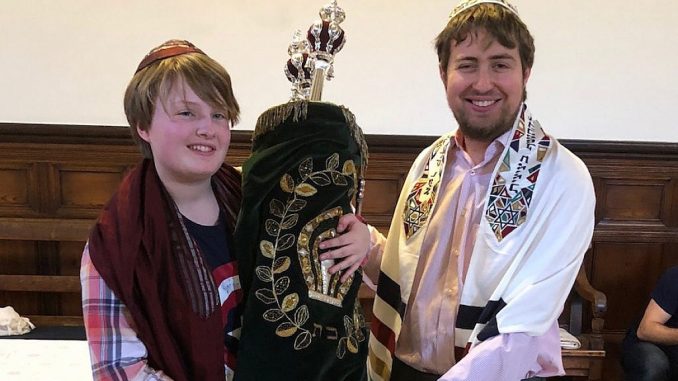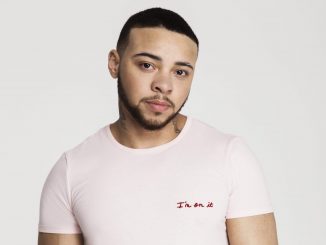
- Esther Thorpe, 14, and her mother, Miriam, were worried about looking for a Jewish community that would accept her identity as gender non-binary.
- Keshet, an LGBT advocacy group based in Massachusetts, said that religious organizations were getting more invitations for religious services that are inclusive of diverse gender identities.
- While there were no official figures, a study by the University of Minnesota revealed that 2.7 percent of children identified either as transgender or non-conforming.
A teenager from the United Kingdom is celebrating the first ever gender-neutral Jewish coming-of-age ceremony according to the recent transgender news by the Times of Israel posted on their website on March 2.
Esther Thorpe, 14, and her mother, Miriam, were worried about looking for a Jewish community that would accept her identity as gender non-binary.
Gendered celebrations
Miriam, a mother of seven children, already had one child who came out as gay. With Esther’s revelation, they were worried that she might not be comfortable as coming-of-age Jewish ceremonies are gendered, bar mitzvah for males and bat mitzvah for females.
“I was quite concerned because if something is important in your coming of age, it should reflect who you are in a person and not squeeze you into the traditional two genders that we happen to have just because of history,” she said.
Keshet, an LGBT advocacy group based in Massachusetts, said that religions were getting more invitations for religious services that are inclusive of diverse gender identities.
“A real frontier for the work that Keshet does these days is around gender identity and gender diversity, a lot around transgender inclusion and making sure non-binary and trans youth are included,” Catherine Bell, senior director of program and leadership at Keshet, said.
While there were no official figures, a study by the University of Minnesota revealed that 2.7 percent of children identified either as transgender or non-conforming.
Child’s gender identity and religious services
“What we’re seeing now is that there are families and there are congregations that are very open to exploring with the kids that are becoming bar and bat mitzvah how they want to be identified,” Rabbi Leora Kaye of the Union for Reform Judaism said.
The Union for Reform Judaism, an organization based in the United States, has a guidebook for synagogues that outline religious ceremonies for gender non-conforming teenagers called b’nei mitzvah.
Miriam’s family coordinated with Gabriel Webber, first year student at London-based, rabbinical school Leo Baeck College, an institution affiliated with the Reform movement. They adopted b’nei mitzvah for Esther.
“Although this is the first one that we’ve had on the radar, it’s going to be far from the last one,” Webber explained.
Challenged with coming up with an appropriate name, Webber looked into the Hebrew language. Other non-conforming celebrants used zera mitzvah (zera meaning seed or offspring) and ban mitzvah where ban is a composite word referring to boys (ben) and girls (bat).
“Esther uses ‘they’ pronouns, which is also a plural being used as a singular, so [b’nei] fit, and it wasn’t making up Hebrew,” Webber revealed.
Another concern was how to address Esther when she would be called up to read Torah. According to tradition, celebrants were introduced with the preface of either ben (son) or bat (daughter)
“It felt like a big responsibility for other non-binary kids in the future,” Esther said.
Miriam, writing in the Jewish Chronicle, commented, “If you have a name that doesn’t give that tie into your family and your history, you are much more isolated, and that compounds isolation that I know Esther still does feel — if you are non-binary or trans and you are the only person in your shul that are already in a different position.”
Finally, Esther chose and was introduced “Esther mi beit Miriam” (Esther from the house of Miriam).
First b’nei mitzvah
In December last year, Esther led the religious service that fell during the Hanukkah festival in front of a hundred people. Aside from being arguably the country’s first b’nei mitzvah, it was also York’s first bar, bat, or b’nei mitzvah as the city’s Jewish community is better known historically for the 12th-century anti-Semitic massacre, where all Jewish believers were killed.
Despite the changes to make the service fit Esther’s identity, some well-meaning friends and family members gave bat mitzvah gifts and cards.
“It was quite easy to make the service be reflective of [Esther being] non-binary, once you have a rabbi that’s on board with it and you have a congregation that’s prepared to take that through,” Miriam said, “and as soon as you left the service you’re back to it’s either a bar mitzvah or a bat mitzvah and there’s nothing in between.”
Esther, on the other hand, was pleased.
“I feel better,” they said. “I feel part of a community, accepted and acknowledged.”



Be the first to comment